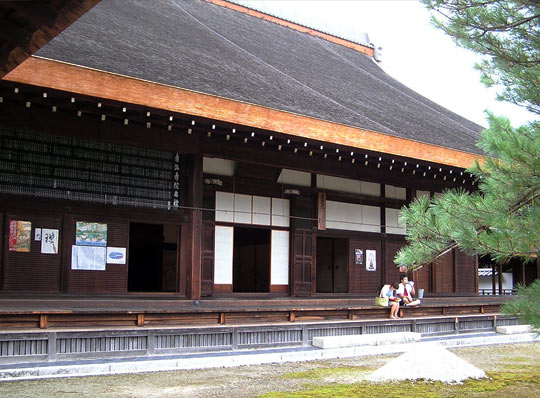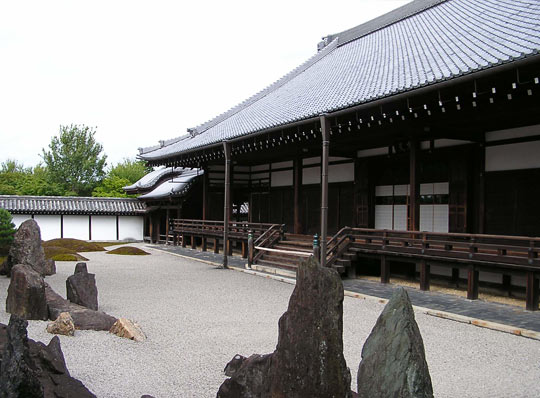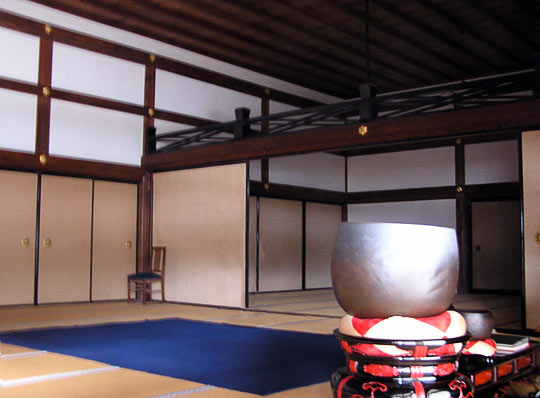The name given to the type of residence that had
evolved by the end of the 14c for the abbot, i.e., the head priest of a Zen temple. Characteristics of the Japanese residential style *shinden-zukuri
Qa¢, developed during the Heian period and of *shoin-zukuri @¢,
developed from the residences of the warrior class *buke-zukuri Ƣ from the 14-16c, were incorporated
into the dwelling. The plan of the houjou evolved from the rectangular
*menzou ° , living quarters
for the superior of a subsidiary temple *tatchuu
ª, used for sleeping, resting, reading etc. During the early 15c this rectangular
area was divided into six rooms, arranged in two rows, three rooms across the
front and the back on an east-west axis. A wide veranda *hiro-en
L, and often a lower veranda *ochi-en
, were built across the front. Regular verandas run along each side. The entrance
*genkan ºÖ, has a hard packed
earthen floor *doma yÔ, and
is located at the right end of the front verandas. The main central room on the
front row is called shitchuu º (also called naka-no-ma ÌÔ); on
either side of this were narrow rooms, on the left the gentleman's or guest room,
dan-no-ma hÌÔ, on right the patron's room, rei-no-ma çÌÔ. Behind
the front row, the center rooms are for the priests' raiment, begging bowls and
dressing, ehatsu ß«, and the one to the right is the *shoin
@, with an alcove *tokonoma
°ÌÔ, shelves *tana I, and
a desk, tsukeshoin t@. In a very large Zen temple, there is usually a
need for two high priests' buildings. One is called daihoujou åûä (also
sotohoujou Oûä or maehoujou Oûä) and the other is the kohoujou
¬ûä (also uchihoujou àûä). The main central room and the room for the
Buddhist altar have plank flooring. The remaining rooms have straw mats *tatami
ô. Rooms are divided with opaque sliding screens *fusuma
¦, many beautifully decorated with paintings. The main entrance has double leaf
folding doors called moroori sankarado ¼ÜVË. Elsewhere, aside from paper
sliding doors, are plank doors with rows of horizontal crosspieces attached at
regular intervals *mairado
ÇË. Examples: Myoushinji Daihoujou Såûä (1654), 29.5m~21.7m, and Kohoujou ¬ûä
(1613), 15.9m~10.0m.
|





